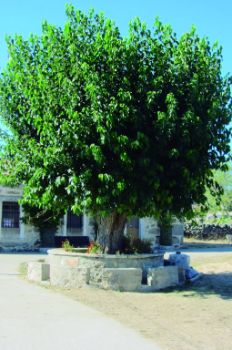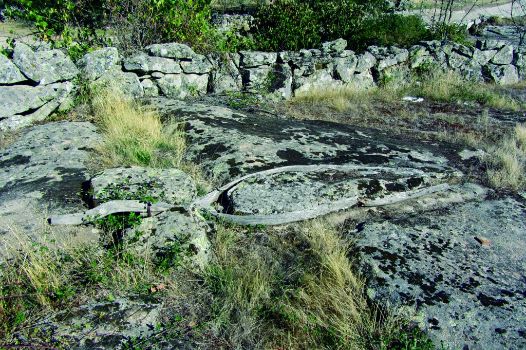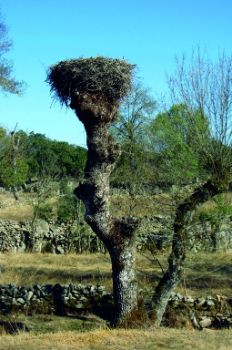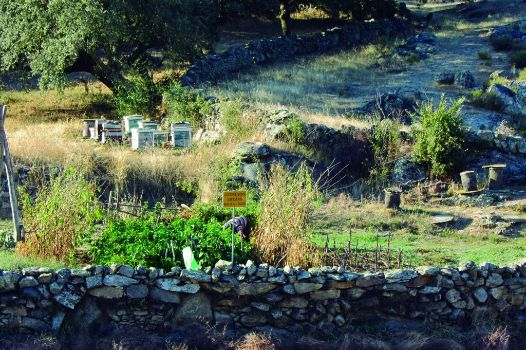Net of Natural
Trails

Stage 25: Gamones - Badilla
Description
A stroll along the banks of Palla Creek
Potros de los Arados at Gamones, where elmwood was tamed to make ploughs, is a must-see site on this short, but beautiful walk. The River Mimbrero is present throughout most of the route, surrounded by old ash trees, bridges, mills and huts, and a rich diversity of wildlife.

This Stage begins next to a mulberry (Morus alba) tree near the church, in the centre of the town of Gamones.
Before leaving the town, the route passes next to a structure used to manufacture plough beams. Interestingly, the moulds used are carved into a rocky outcrop in the heart of the town.
A local craftsman would come here to shape the elmwood (Ulmus minor) into plough beams. There are four structures or moulds carved into the rock, a basin to soak the wood and several holes where the pulleys were mounted.
The route leaves the town through the Teso district and ventures into a landscape dotted with private farmsteads, enclosed by stone walls, where livestock graze. The area near the wall is populated with holm oaks (Quercus ilex) and hawthorns (Crataegus monogyna), whilst pollarded ashes (Fraxinus sp.) grace the farm and serve as nesting places for white storks (Ciconia ciconia).

The route continues along a wide, clear stretch, with a landscape dominated by granite outcrops. A stone cottage, possibly used in the past as storage for tools, can be seen on the roadside.
The path crosses the bottom of a natural drainage valley using the nearby stone bridge.
Further on, the route ventures onto a forest track flanked with holm oak trees. This stretch is barely 300-metres long, as the Nature Trail leaves the track and heads towards a crossing off limits to livestock. From here, the path always runs close to Palla Creek.
This stretch along the creek is dotted with pontoons and crossings. Holm oaks give way to a small riparian forest along the river.

Just before the end of the Stage at Badilla, there is a small bee farm where modern hives alternate with ancient "dujos" (thick oak logs, hollow or emptied out, used as beehives).
The Stage ends in the north edge of Badilla.
Enlaces de interés
Profile

Highlights
Further information
Mulberry Tree
Many sources believe that during the Mozarab or Romanesque period, in the ninth century or even before, when a church was completed and consecrated by the bishop, it was customary in Castile to plant a mulberry tree in front of the church door to highlight the sanctity of the new building .
Leaving aside mysticism and legends about a magical, sacred tree, the mulberry tree is a hardwood species resistant to moisture that is used for turnery, wainwrightry and carpentry.
Its leaves have been used as livestock feed, and even as tea with pain-relieving effects. The fruit of the mulberry is rich in vitamins and sugars.
Negrillos
"Negrillo" is the common name used in this area for the common elm. Although the elm tree can grow up to a height of 30 m, it usually does not exceed 10 m. The trunk is thick and straight. The bark is smooth when young, becoming blackish and fissured as it grows older. The leaves are asymmetrical. Indeed, some people say that "God made a mistake" when creating the elm tree.
The wood, which is hard, but pliable, is easy to work with, and is widely used in construction and carpentry. It is a favourite for making wagons and farm tools.






